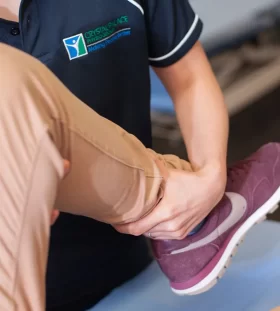What are the main approaches used in aged care physiotherapy?
Aged care physiotherapy is the branch of physiotherapy that focuses on assessing and managing physical conditions in the elderly. Various approaches are used, including comprehensive geriatric assessments, individualised approaches to screening, assessments, interventions, and pressure ulcer management.
Table of Contents
Comprehensive geriatric assessment
Comprehensive geriatric assessment is a multidimensional, interdisciplinary diagnostic process that assesses the physical, psychological and social status of frail elderly patients. The assessment uses various methods, including evaluations of cognition, depression, and psychosocial status. Physiotherapists are a vital component of comprehensive geriatric assessment.
Pressure ulcer management
Pressure ulcer management in aged care physiotherapy is an ongoing challenge. As the population ages, the incidence of pressure ulcers increases. They are often painful and uncomfortable and can affect a person’s life quality.
Many factors put patients at risk of developing a pressure ulcer. It is essential to know how to identify these risks. In addition, it is necessary to determine if they are preventable.
The best approach to pressure ulcer management is to understand the individual’s risk profile. It can help to ensure that your treatment plans are effective.
An appropriate strategy should include a multidisciplinary team that establishes goals and objectives for the patient. The team should also be prepared to monitor the incidence of preventable pressure ulcers.
Although there are various methods for preventing pressure ulcers, the basic principles of wound care remain a key component of therapy. For example, proper care should be provided every 30 minutes, lasting at least 30 seconds.
Wearable activity monitors
Wearable activity monitors are becoming increasingly popular in recent years. They provide a unique insight into physical capacity and can aid in recovery processes. These devices are also inexpensive and can help to replace traditional monitoring tools. However, many factors must be considered when implementing a wearable device in healthcare.
Some of these factors include set-up and maintenance costs and education costs. Other factors are the patient’s cost and compliance with the device. In addition, the accuracy of step counts is still a concern in free-living settings.
Several studies have reported high levels of patient satisfaction with the use of wearable devices. These results suggest that patients find the quantifiable information motivating and helpful.
The primary metric associated with wearable activity monitors is the daily step count. It has been reported that low daily step counts are associated with poor outcomes. It is an area where research is needed to understand the impact of wearable activity monitors on the physical ability of individuals with functional limitations.
Low utilisation of physiotherapy services in some countries
Physiotherapists were involved in the recruitment process. These people were asked to participate in a survey. Afterwards, the results of the survey were tested for validity.
Physiotherapy at physioinq.com.au is a health profession that uses physical interventions to improve the function and well-being of a person. It is essential to ensure that the recommendations of physiotherapists are based on reliable evidence.
However, there are still limitations to this approach. For example, the model is not suitable for all rehabilitation professions. Further research is also needed to identify effective approaches to assessment and treatment.
One possible solution is to educate rural health workers about the scope of physiotherapy and the management of movement problems. Physiotherapists should be supported to help them do this. In particular, physiotherapists should be encouraged to advocate for more services for older adults at the local level.
Moreover, the need for high-quality research on the subject is highlighted. Research should focus on frail older adults and subpopulations of older adults.
Time and ease of administration
In aged care physiotherapy, time and ease of administration can be limiting factors. Moreover, there is a growing need for high-value physiotherapy to support the reablement of older adults. This study aimed to determine the optimal physiotherapy services to provide older adult clients with the best outcomes.
The study found that the time and ease of administering a physiotherapy session highly depended on the type of referral, the physiotherapist’s expertise, and organisation. On average, the time required to perform a session was less than half an hour. However, this was more influenced by factors such as a physiotherapist’s clinical experience, time available, and the availability of appropriate equipment.
While the time and ease of administering a session may be easier than some believe, there are still important considerations. For example, the best practices in preparing and documenting client data should be considered. Additionally, a properly designed information technology program could help ensure that such processes are efficient.
However, this study did not cover all areas of physiotherapy. It provided no empirical data regarding how long a physiotherapy session was deemed adequate, nor did it address how the service was monitored. Nevertheless, it offered a broad range of physiotherapy service types.
One of the study’s key findings was that older adults tended to have higher levels of engagement with physiotherapy services compared to younger individuals. Despite this, many physiotherapists needed to be more utilised in Australian RACFs. Therefore, it is essential to increase the availability of evidence-based physiotherapy for older adults in RACFs.
 Tagged:
What are the main approaches used in aged care physiotherapy
Tagged:
What are the main approaches used in aged care physiotherapy
